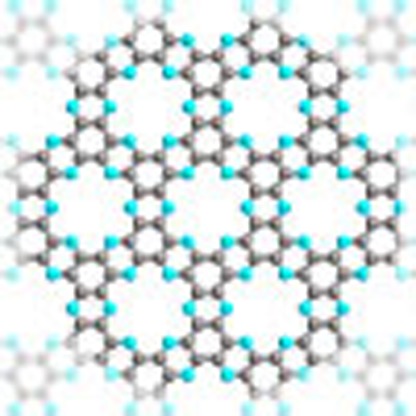- Record: found
- Abstract: found
- Article: found
Nitrogenated holey two-dimensional structures

Read this article at
Abstract
Recent graphene research has triggered enormous interest in new two-dimensional ordered crystals constructed by the inclusion of elements other than carbon for bandgap opening. The design of new multifunctional two-dimensional materials with proper bandgap has become an important challenge. Here we report a layered two-dimensional network structure that possesses evenly distributed holes and nitrogen atoms and a C 2N stoichiometry in its basal plane. The two-dimensional structure can be efficiently synthesized via a simple wet-chemical reaction and confirmed with various characterization techniques, including scanning tunnelling microscopy. Furthermore, a field-effect transistor device fabricated using the material exhibits an on/off ratio of 10 7, with calculated and experimental bandgaps of approximately 1.70 and 1.96 eV, respectively. In view of the simplicity of the production method and the advantages of the solution processability, the C 2N- h2D crystal has potential for use in practical applications.
Abstract
 There is currently interest in two-dimensional graphene-like materials incorporating
heteroatoms. Here, the authors synthesize a solution-processable, holey two-dimensional
network with C
2N stoichiometry containing evenly distributed holes and nitrogen atoms, and use it
to fabricate a field effect transistor.
There is currently interest in two-dimensional graphene-like materials incorporating
heteroatoms. Here, the authors synthesize a solution-processable, holey two-dimensional
network with C
2N stoichiometry containing evenly distributed holes and nitrogen atoms, and use it
to fabricate a field effect transistor.
Related collections
Most cited references29
- Record: found
- Abstract: found
- Article: found
Electric Field Effect in Atomically Thin Carbon Films
- Record: found
- Abstract: found
- Article: found
Two Dimensional Atomic Crystals
- Record: found
- Abstract: found
- Article: found